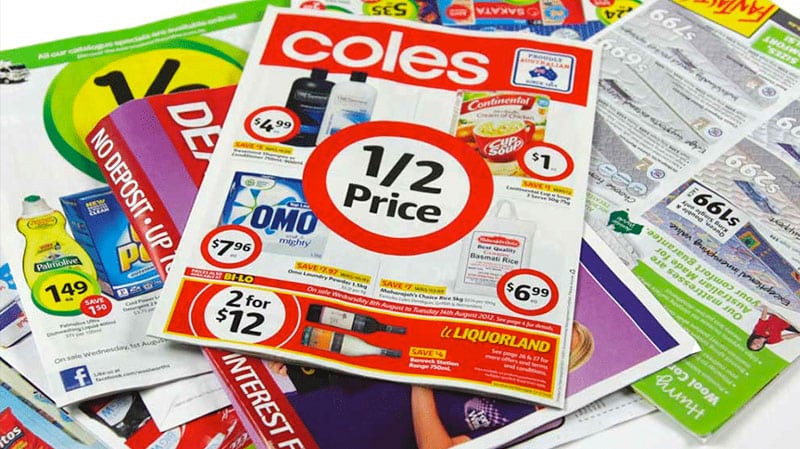
Five things to consider when reviewing your catalogue program
– and why the fat lady may not be singing just yet
By Angus Frazer, Co-Founder of Sonder
This article first appeared on marketing website Mi-3
The once ubiquitous print catalogue is in its death throes, cheered on by brand-driven marketers the world over. Accelerated by the pandemic, the demise has seen retail businesses globally either throttling back or stopping print catalogues completely. To some, the opportunity to finally kill off the print catalogue has been one of the silver linings to the impact of the pandemic.
Even the iconic Ikea catalogue has not been immune to the changing media landscape. Launched in 1950 in Sweden, the catalogue, at its peak, was said to have a greater annual circulation than the Bible. Now, globally, its future is limited to special editions with much smaller, targeted print runs.
Many retail businesses in Australia are reviewing their reliance on print catalogues. However, the strategies being applied are varied. Just take the two biggest supermarkets as an example. Coles took the pull-off-the-band-aid-quickly approach and ended print catalogues in mid 2020. Woolworths has taken a more considered approach, testing and learning with incremental changes to distribution volumes and geographies.
So what is a business to do with their once-cherished sales catalogue?
There’s no doubt that the future of value-based offers is largely in the hands of digital technologies that deliver a curated selection of the most compelling offers to individual customers, based on behavioural data and AI based machine learning. This is not about simply emailing a pdf of your print catalogue to your email base. The digital promise is far more compelling. Lower costs; efficient distribution; better customer experience; customised offers; click-to-buy functionality; trackable performance… No more “spray and pray” distribution with the old printed catalogue. We’re talking precision marketing.
But there are risks in all the promise. Get the transition to digital wrong, and you can hurt sales revenue, whilst damaging customer and vendor relationships. To transition to digital, businesses need the right data, owned media channels, software, operations and strategy. Anything other than best-in-class risks becoming ham-fisted retailing.
Here are five things to consider when transitioning off your print catalogue:
1. Customer needs
From the customer’s perspective, times are tough for many people. And in times of uncertainty people are prone to tightening the household belt and look for savings. There’s a certain irony that some retailers have removed the most famous place for people to find a bargain, right when they need it most.
2. Vendors like catalogues
Our research highlights that catalogues are often the most in-demand owned media channel by vendors. Rightly or wrongly, vendors value catalogues. So, to manage vendor relationships, ensure you have alternative sales driving media channels established and valued before removing the print catalogue.
3. Organisational implications
For decades, catalogues have been deemed a cornerstone media channel to retailers. They can often orientate an entire business, driving a number of core operations such as pricing, ticketing, inventory management, sales resourcing and marketing. Retail operations and systems need to be considered before action is taken.
4. Refilling the revenue hole
Catalogues are a profitable owned media channel. A supermarket could be earning well over $100m in revenue from vendors paying to appear in the print catalogue. Yes, there is a hard printing/distribution cost, but there is also a healthy margin. How will this be replaced?
5. Competitive advantage
With so many retail businesses no longer printing catalogues, in some cases, there may be a competitive advantage to NOT ending your catalogue. At least for a little while. Perhaps even go on the offensive and prioritise your print catalogue in your competitor’s heartland?

The future of print
So, that’s it for the printed catalogue then. Dead. Buried. A relic from industrial age that outlived its welcome… Well, perhaps not quite. What we’re seeing now is a delineation and polarisation of owned media channels. Price and product offers can be managed by digital channels, but the print medium can still play a role in your owned media ecosystem.
The fusion of custom magazine and catalogue (often referred to as the cringeworthy ‘magalogue’) is a concept with merit. This is essentially the new Ikea approach. Produce fewer, bigger, better editions that bring more lifestyle and brand messaging to the communication. Price and product can be woven into the content to provide contextual relevance. The major supermarkets have already proven the custom magazine model works by producing the highest read magazines in the country. Supplementing or evolving these kinds of publications could result in a new kind of catalogue that aims to engage and entice readers far more than ‘junk mail’.
The fat lady might be doing her vocal exercises backstage, but there is still much to consider for the humble print catalogue. Catalogues, in many ways, have never held so much promise, just don’t miss the real opportunity in the blind pursuit of cost savings.
Engage With Sonder
We believe your fortune lies within. Look within to reframe your perspective on how to find growth.
Contact us to unlock new revenue today


